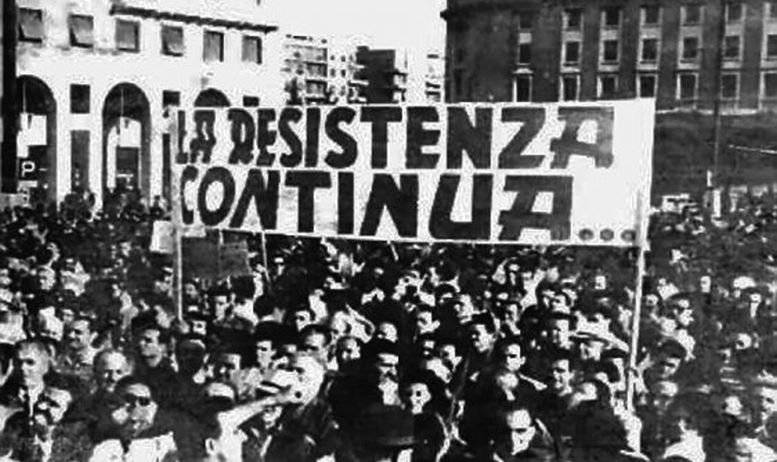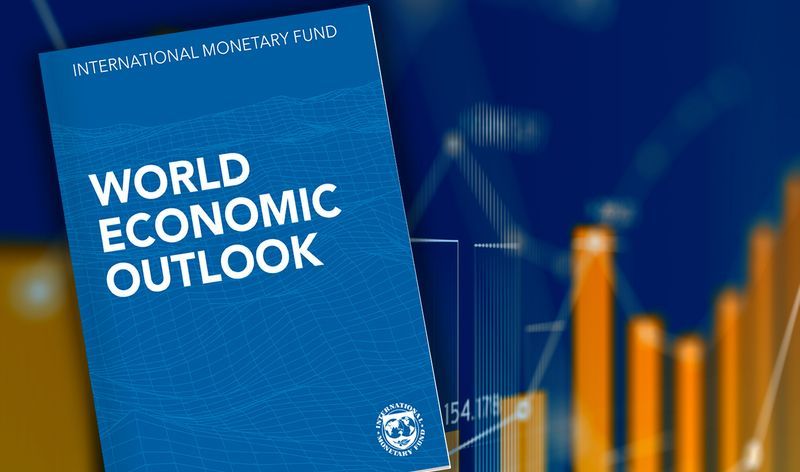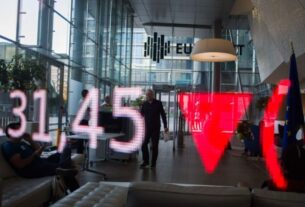Eugenio Marcigliano is a member of Lotta per il Socialismo in Italy.
April 25 marks the liberation of Italian territory from Nazi occupation in 1945 and the end of two decades of fascist barbarism. This historical reality is today challenged by the revisionism of the right-wing forces in government, in particular by la Lega and Fratelli d’Italia.
The motion tabled in parliament by the majority parties, aimed at converting ‘Liberation Day’, the national holiday commemorating the liberation from Nazi-fascism, into a day of ‘reconciliation’ against ’all totalitarianisms’, represents a profound threat to the historical memory of the Italian anti-fascist resistance. It is an insidious attempt to erase the values and revolutionary aspirations of thousands of working men, women, and young people who gave their lives in the struggle against fascism, and for a future free from oppression and misery. This incredible insult to the struggle is a reminder that the real mistake of the partisans was to have abandoned their weapons after April 25 instead of continuing the fight for the overthrow of capitalism.
A revolution betrayed
The majority of the partisans were in fact socialists and communists, intent on continuing the fight against the Italian bourgeoisie, accomplices and benefactors of all the barbarity of the fascist regime. However, the Stalinist PCI, under the leadership of Palmiro Togliatti, was of a different opinion. Using the excuse of the Allied occupation, it chose to pursue an opportunist policy that saw as its first step the disarmament of the partisans in order to prevent the development of an armed insurrection. This was in accordance with the orders of Stalin who, in compliance with agreements made with British and US imperialism, wanted to prevent the anti-fascist resistance resulting in a socialist revolution — and threaten the position of the bureaucracy in the Soviet Union itself.
In fact, by the end of the war the conditions for a mass insurrection were ripe, with increasing numbers of workers intent on taking control of the factories and peasants fighting to demand an end to landlordism and the redistribution of land. The betrayal of the PCI, in collaboration with the forces of the bourgeoisie, meant that the factories were back in the hands of the industrialists, the land in the hands of the large landowners and mafiosi, and the weapons in the hands of the bourgeois state. Socialist and communist partisans who did not bow to the policy of national unity, i.e. collaboration with the ‘democratic’ bourgeois forces supported by the allied military occupation, were accused by the PCI of being fascists and in some cases murdered by the agents of Stalinism.
The myth of the “Republic born of the Resistance”
The reality is that with the fall of Hitler and Mussolini fascism was not completely defeated. It was a historic victory for the working class, but a partial one. In many countries, fascism lasted well after the Second World War, as in Spain, or Portugal. Even in Italy, however, the “Republic born of the Resistance” was never really anti-fascist, because it served to allow the continuation of the economic and social system responsible for fascism’s rise to power. After the war, fascist criminals suffered no persecution and, after Togliatti’s amnesty in 1946, were reintegrated into the apparatuses of the Italian state, primarily the police, security services and judiciary. The bourgeois state, even though it put on a “democratic” mask, remained an expression of the dictatorship of the capitalists and had to rely on the remnants of the state apparatus and the fascist movement to consolidate and defend its system.
In fact, after the Togliattian amnesty, prisons were emptied of fascist criminals and filled with partisans and anti-fascists who wanted to continue the revolutionary struggle. The republican state continued to brutally repress the working-class and peasant masses, often at the hands of the same officers and bureaucrats who had carried it out during the fascist dictatorship. In the Years of Lead (late sixties to late eighties), the state apparatuses, shaken by a decade of popular uprisings, went so far as to use neo-fascist terrorists to carry out massacres aimed at terrorising the population into submission, from Piazza Fontana bombing in Milan to the Bologna station bombing.
The anti-fascism of the bourgeois institutions is a facade, and the democratic and social principles of the anti-fascist Constitution of 1947 were never applied. It is therefore useless to extol the values of a constitution that have only remained on paper and in which the most progressive elements have been gradually emptied of content by governments of both the right and centre-left.
Today, more than ever, anti-fascism is anti-capitalism
For decades, the conflictual, revolutionary, and class character of the Resistance has been obscured by the rhetoric of institutions and the official history of Italian “democracy.” The revolutionary and anti-capitalist nature of the partisan struggle is omitted, to make way for an empty rhetoric of national unity. This is why even the value of anti-fascism is today threatened by the far-right government of Giorgia Meloni, whose party is a direct descendant of the Movimento Sociale Italiano (the reconstituted remnants of the fascist movement founded by Mussolini). Moreover, this ideological offensive finds support in the institutions of the Italian and European bourgeoisie. Indeed, right-wing MPs have been able to refer directly to the motion passed by the European Parliament in 2019 that equates Nazism, fascism and communism as forms of totalitarianism. This sets a dangerous precedent that, by obfuscating the class nature of dictatorial regimes, opens the door to historical revisionism and the demonisation of the history of the international labour movement. This, despite having seen its revolutionary aspirations betrayed by its Stalinist and reformist leadership, was in fact the central driving force behind the defeat of Nazi-fascism and continues to be the only real curb to the authoritarian drift of capitalism.
Fascism was a weapon of big capital in Italy and elsewhere to destroy the workers’ and socialist movements. Thanks to the fascist dictatorship the bourgeoisie averted the danger of a socialist revolution and made huge profits through exploitation, oppression and the most brutal colonial expansion. Fascism is a product of the crisis of capitalism, and cannot be definitively defeated without destroying the social and economic system that creates it. The rise to power of the extreme right in Italy and around the world shows how the fight for our democratic rights and against bourgeois reaction is more relevant today than ever before.
The new partisans are those who fight for the rights of workers, women, LGBTQIA+ people and migrants, against an economic and political system designed to defend the profits of a ruling class that is responsible for environmental devastation, wars and the growing misery of the working class. Only the struggle for a democratic and ecological socialism can truly fulfil those liberating aspirations that were at the heart of the Resistance.
Long live anti-fascist April 25! Long live socialism and workers’ democracy! Resistance, now and always!



